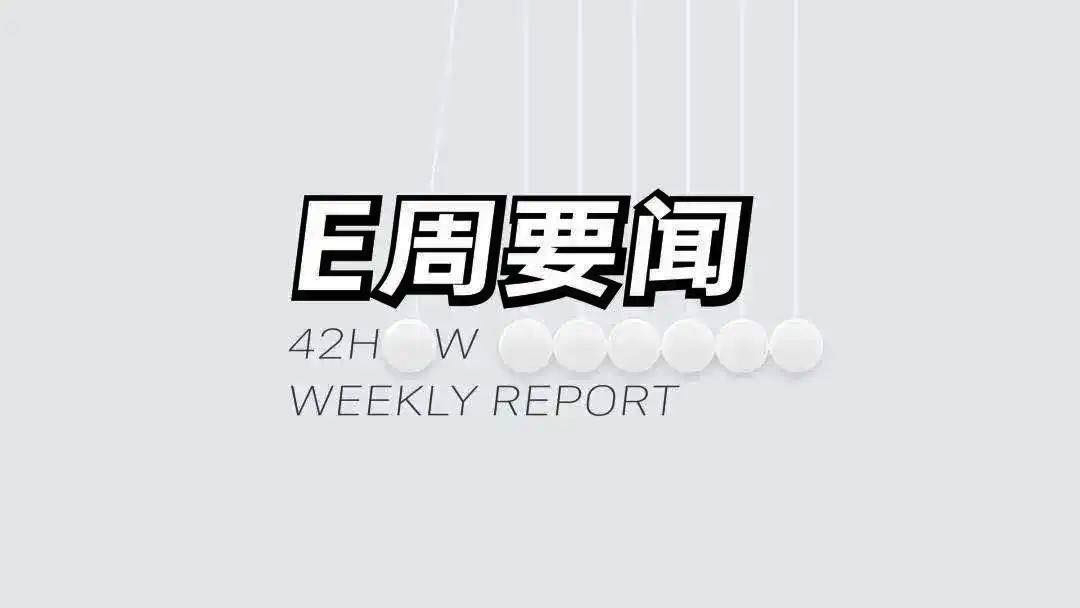Weekly Index
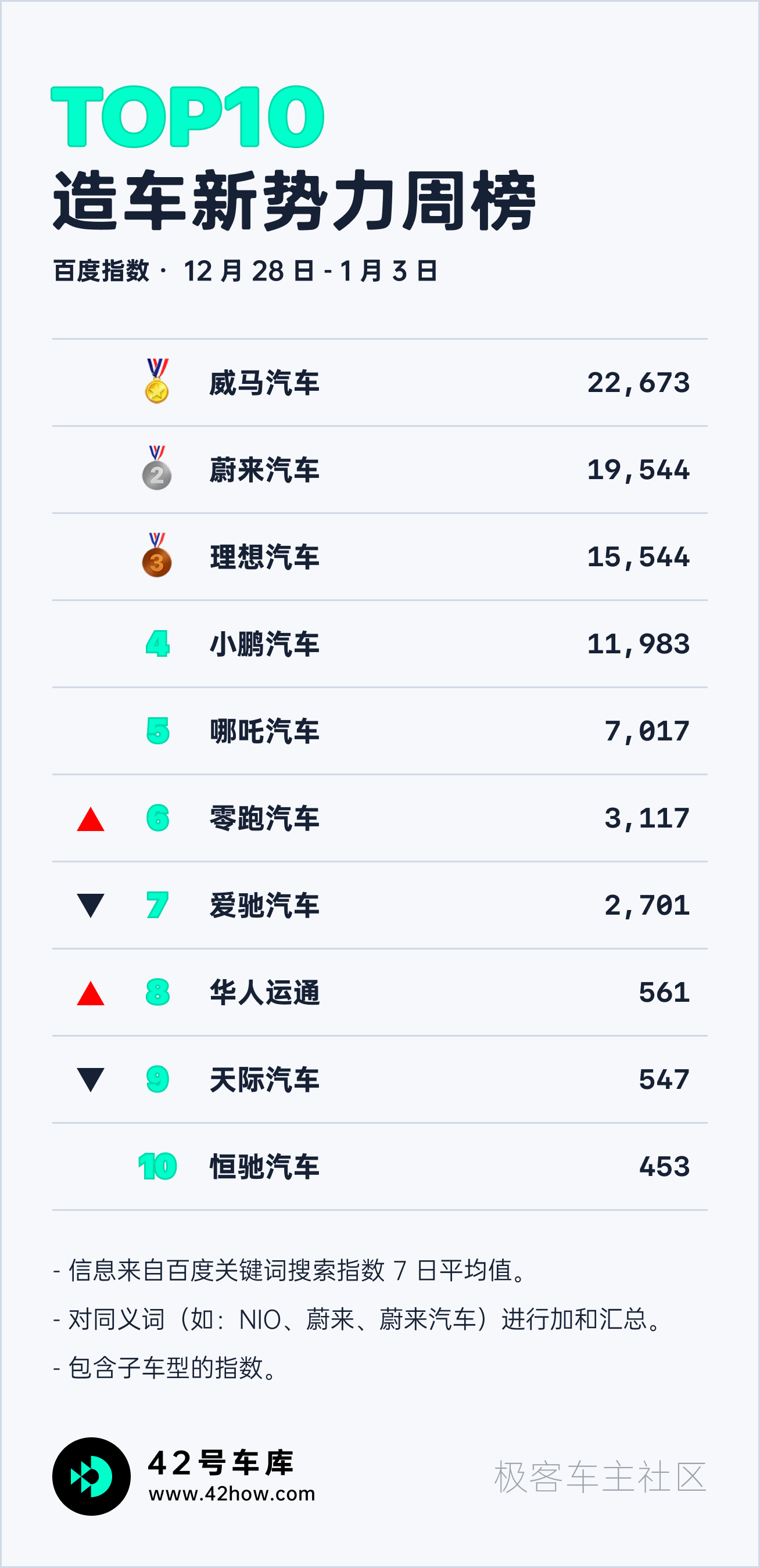
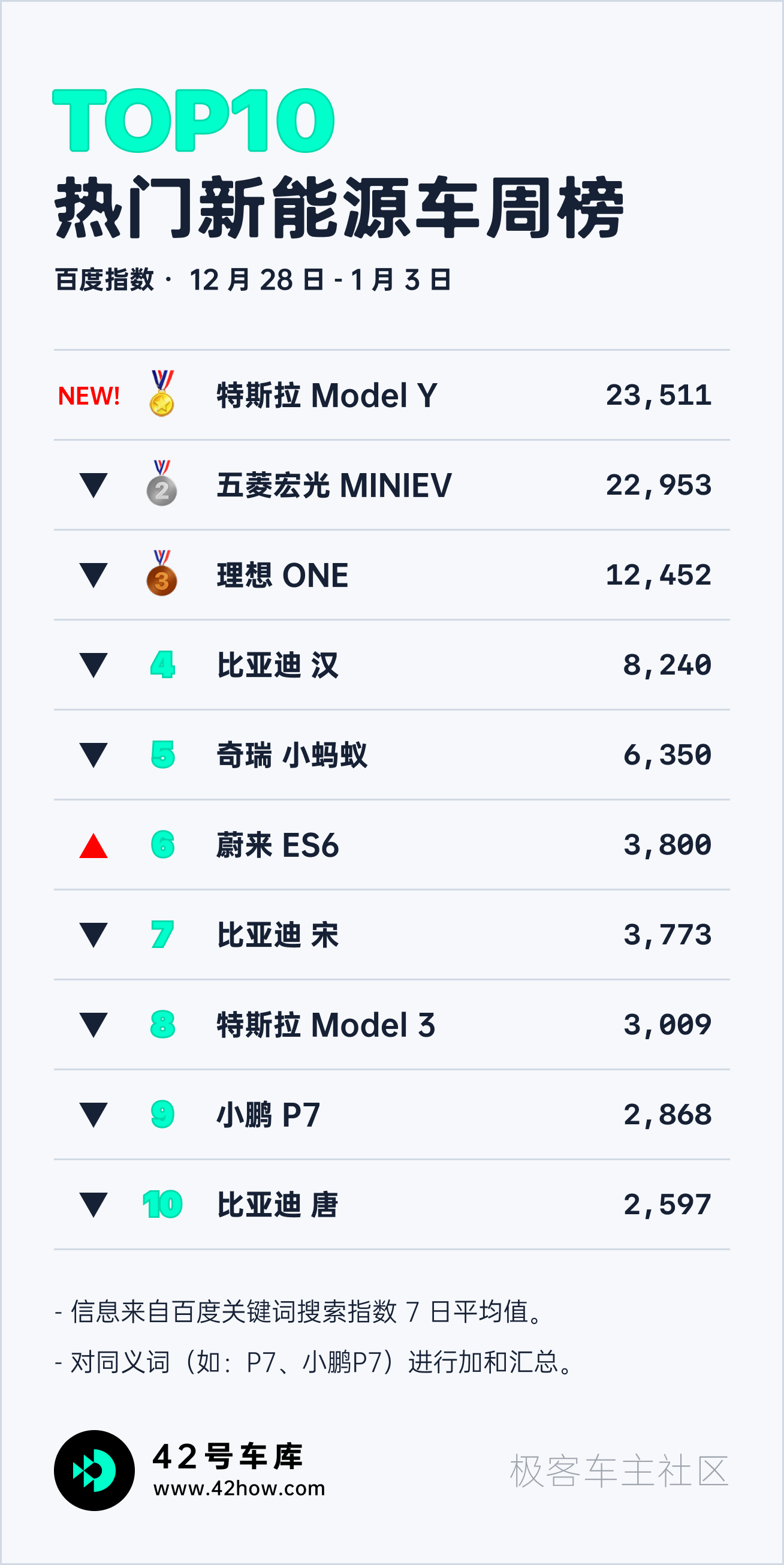
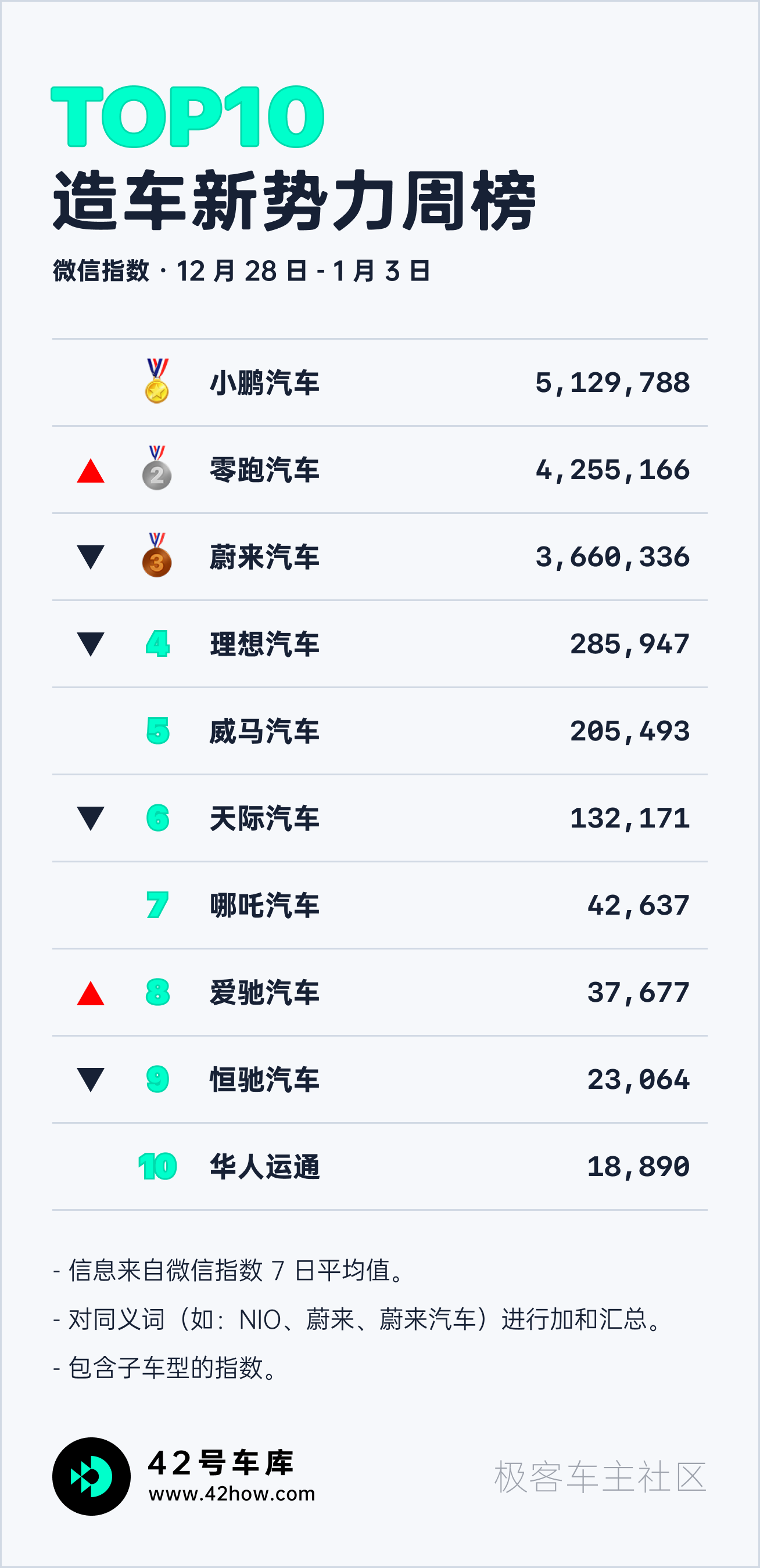

Weekly News
NIO ET7’s Design Revealed with Laser Radar on the Roof
Today, NIO released the first poster of its new sedan model. Judging from the contour of the roof, the new car’s design is very similar to that of the ET Preview, which debuted at the 2019 Shanghai Auto Show. The style is Sportback, just like Audi A7 and Porsche Panamera.
After special processing of the picture, another highlight is a small protruding square above the front of the car, which is expected to be the module of the laser radar.

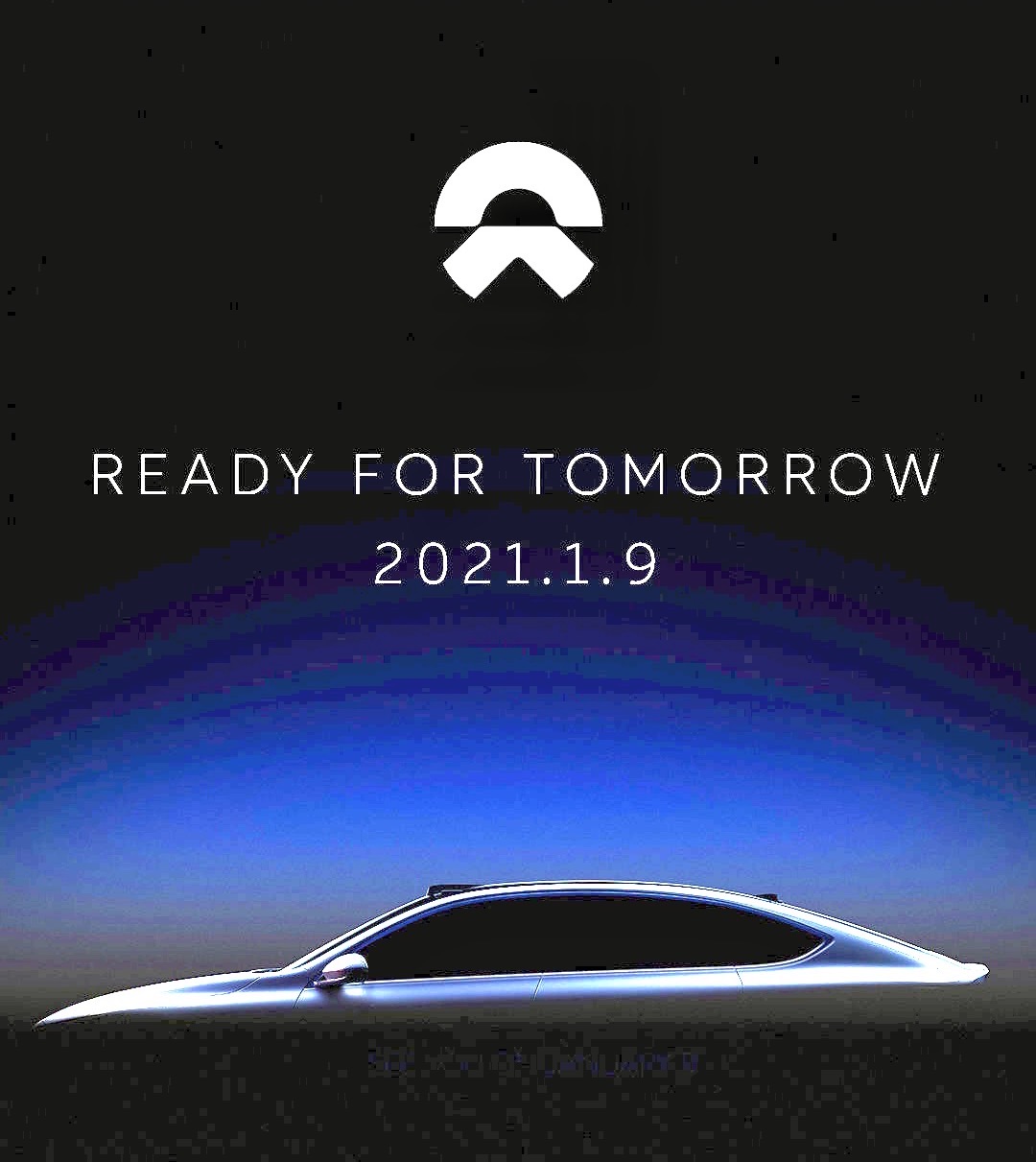
In addition to the flagship sedan with the new autonomous driving technology, on NIO Day, January 9th, NIO will also release core technologies including a 150 kWh battery system and second-generation battery swapping stations.
Quick Comment:
NIO did not disclose the supplier of its laser radar. However, in a previous media communication meeting, Qin Lihong and Li Bin stated that the supplier of the laser radar can supply in mass production in the third quarter of 2021, and cars with the NT 2.0 platform can be mass-produced in the fourth quarter of this year. NIO will find a laser radar supplier that is better than Luminar and can produce in volume earlier.
Tesla Model Y Priced at CNY 339,900-369,900
On January 1st, Tesla China announced the prices for the Model Y. The long-range dual-motor version will be priced at 339,900 RMB and has a range of 594 km. Deliveries are expected to begin in January 2021. The Performance high-performance version will be priced at 369,900 RMB and has a range of 480 km. Deliveries are expected to begin in the third quarter of 2021.


The long-range rear-wheel drive version of the Model 3 has been taken off the market, leaving only the standard range upgrade version and the Performance high-performance version. After subsidies, the standard range upgrade version will be priced at 249,900 RMB while the Performance high-performance version will be priced at 339,000 RMB.
Quick comment:
On the first day of the new year, the prices of the Model Y are finally announced. The positioning and price of the Model Y not only brings greater competitive pressure to the domestic new energy vehicle market, but also targets the territory of mid-size SUVs by BBA.
In terms of the market performance of the Model 3, Tesla has already proven that electric vehicles can compete head to head with fuel vehicles in sales with its differentiated competitive advantage. On the Model Y, Tesla’s strengths in differentiated competition have been amplified.
Tesla produced 509,737 vehicles and delivered 499,550 vehicles in 2020
On the evening of January 2nd, Tesla announced its production and delivery figures for 2020, with a total production of 509,737 vehicles and deliveries of 499,550 vehicles.
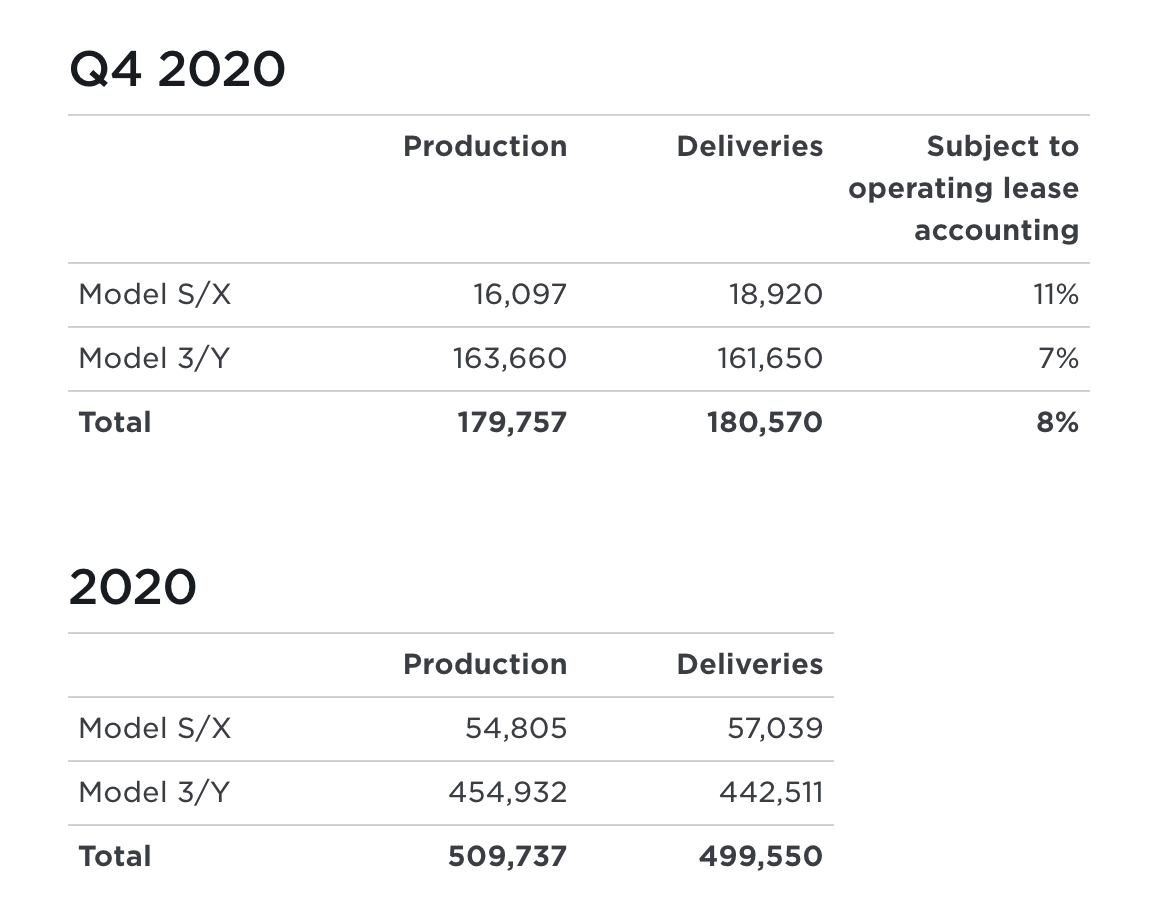
Fourth quarter of 2020:
- Production of Model S/X was 16,097 vehicles, while deliveries were 18,920 vehicles;
- Production of Model 3/Y was 163,660 vehicles, while deliveries were 161,650;
- Total production was 179,757 vehicles, while deliveries were 180,570.2020 Full Year:
- Model S/X production reached 54,805 units with deliveries of 57,039 units;
- Model 3/Y production reached 454,932 units with deliveries of 442,511 units;
- Total production was 509,737 units with deliveries of 499,550 units.
Meanwhile, Tesla announced that Model Y production has begun at the Shanghai Super Factory and will be delivered soon.
Quick Review:
In December 2020, Elon Musk sent multiple internal emails to encourage employees to increase production and accelerate delivery schedules, and stated that Tesla was striving to achieve its target of delivering 500,000 vehicles in 2020 to counter criticisms.
In the new year, Tesla has delivered its results, exceeding 500,000 units in total production with a delivery shortfall of only 450 units, which is an excellent performance considering the impact of the pandemic. Elon Musk commented on Twitter that he is proud of the team and that when Tesla was founded, he believed there was only a 10% chance of survival.
Li Auto and XPeng Release Delivery Figures, 2020 Performance Report

On January 2, Li Auto released delivery data for the full year 2020, as well as for the fourth quarter and December, for the Li ONE:
- 6,126 units were delivered in December, a 31.9% increase from November and a 529.6% increase from December 2019, setting a new record for monthly deliveries;
- 14,464 units were delivered in the fourth quarter, a 67% increase from the third quarter;
- A total of 32,624 Li ONEs were delivered in 2020.
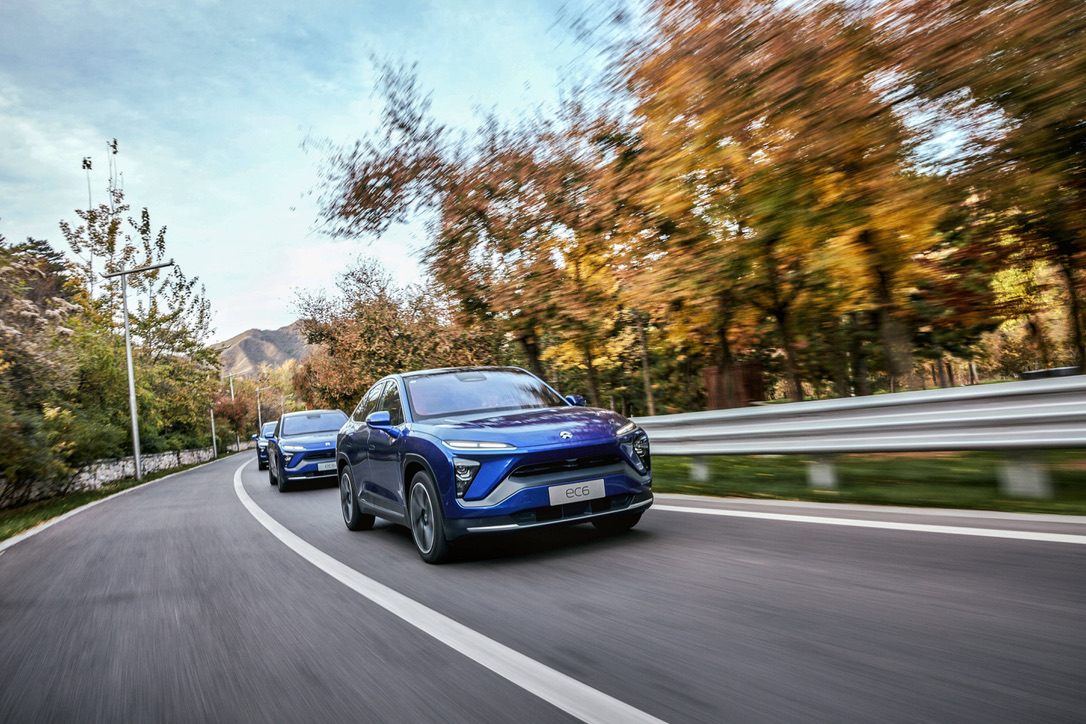
On January 3, NIO released delivery data for the full year 2020, as well as for the fourth quarter and December:
- 7,007 units were delivered in December, setting a new monthly delivery record, with a year-on-year increase of 121.0%, consisting of 2,009 ES8s, 2,493 ES6s, and 2,505 EC6s.- The delivery volume in the fourth quarter of 2020 reached 17,353 units, an increase of 111.0% year-on-year, setting a new record;
- As of December 31, 2020, the cumulative delivery volume of ES8, ES6 and EC6 reached 75,641 units, of which the delivery volume in 2020 was 43,728 units.
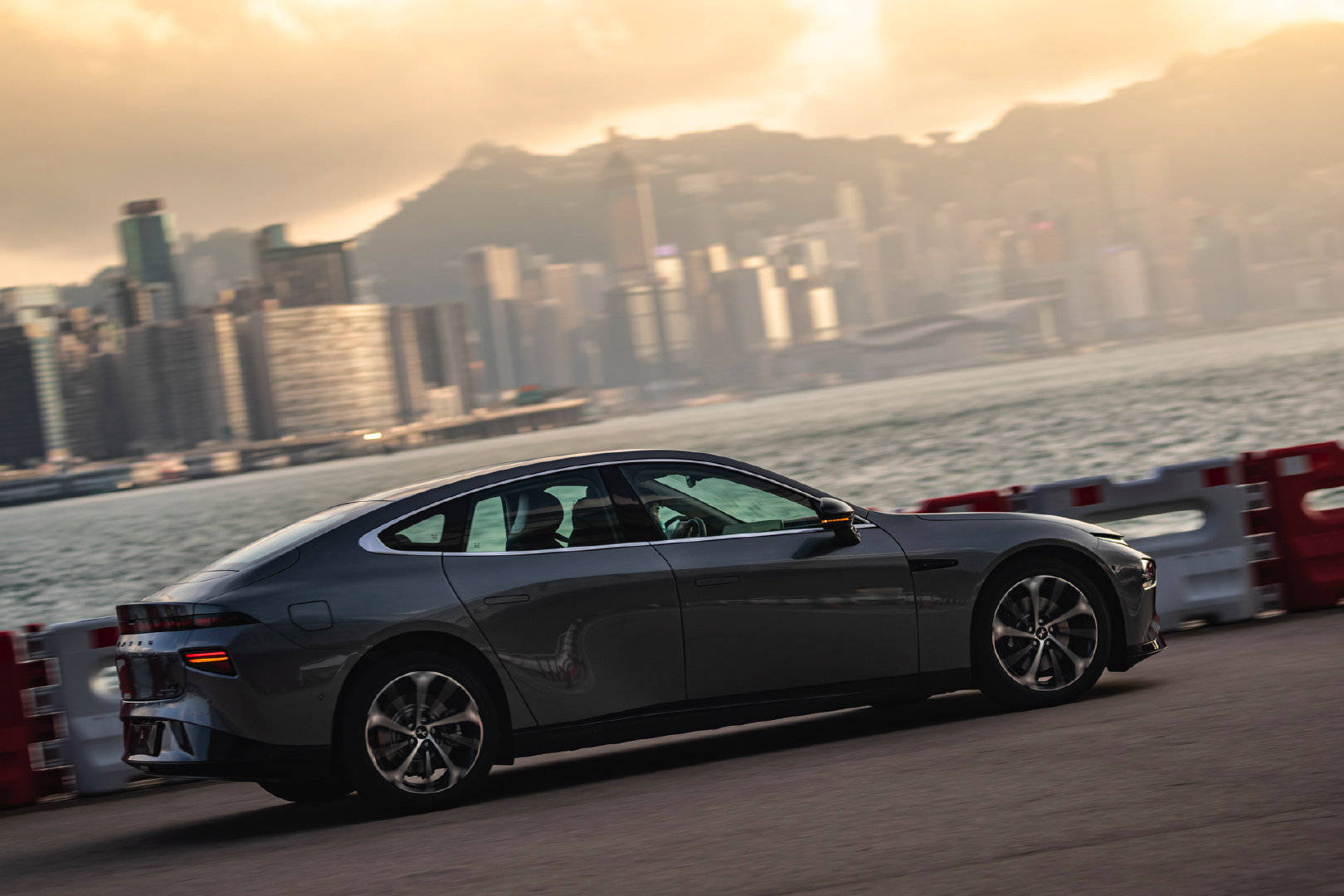
On January 4th, XPeng released its delivery data for 2020, the fourth quarter and December:
- The delivery volume in December reached 5,700 units, up 326% year-on-year and 35% month-on-month, setting a new historical high. Among them, XPeng P7 delivered 3,691 units and XPeng G3 delivered 2,009 units;
- The cumulative delivery volume in the fourth quarter of 2020 was 12,964 units, up 303% year-on-year and 51% month-on-month. Among them, XPeng P7 delivered 8,527 units, up 37% month-on-month;
- The cumulative delivery volume in 2020 was 27,041 units, an increase of 112% year-on-year.
Quick comment:
In 2020, domestic new carmakers including XPeng, Li Auto and NIO achieved positive gross margins and record delivery volumes, with stock prices repeatedly surging to new heights. In a difficult year affected by the pandemic, these new carmakers all delivered outstanding results.
According to the Chinese Society of Automotive Engineers, the growth rate of the new energy vehicle market next year may exceed 30%. With the faster deployment of Tesla in China and traditional carmakers joining the competition in the electric vehicle sector, the market competition will be more intense but development will be more promising.
New Energy Vehicle Subsidy Standard Down 20% in 2021
On December 31, the 2021 financial subsidy policy for promoting the application of new energy vehicles was officially launched, with a subsidy reduction of 20%. According to the new policy, the subsidy for purely electric vehicles with a range of 300-400 km is 13,000 yuan, a reduction of 3,200 yuan from last year, and the subsidy for purely electric vehicles with a range greater than or equal to 400 km is 18,000 yuan, a reduction of 4,500 yuan from last year.

For hybrid vehicles with a pure electric range greater than or equal to 50 km, the subsidy is 6,800 yuan, a decrease of 1,700 yuan compared to last year. The technical threshold remains unchanged, and only the subsidy amount has decreased. According to the information released at the beginning of 2020, new energy vehicle subsidies will continue to decrease by 30% next year.Quick Review:
As subsidies are gradually reduced, the dependence of electric vehicles on policies for prices has become lower and lower, which means that the price of power batteries has gradually dropped to a relatively reasonable level.
However, product strength still needs to be further improved. If electric vehicles can maintain a high growth trend after completely getting rid of policies such as license plates, it means that the popularity of electric vehicles has reached a certain level.
In addition, WLTC range standard with stricter test conditions has been added to hybrid vehicle types. Although the range value is slightly lower than the NEDC standard, it is closer to the actual range ability. It is hoped that it can gradually transition to the WLTC standard in 2021.
XPeng Motors Teams Up with Livox, a Subsidiary of DJI, for Autonomous Driving Lidar
On January 1st, Xpeng Motors announced its partnership with Livox, an autonomous driving LiDAR company under DJI, to provide customized LiDAR for the new car expected to launch in 2021.
According to the information released by Xpeng earlier, the new vehicle planned for 2021 is a compact sedan built on its David platform, which will be Xpeng’s first model equipped with LiDAR.
The LiDAR supplier Livox, incubated by DJI in 2016, specializes in the scalable production of high-performance LiDARs and currently has an annual production capacity of 100,000 units. The LiDAR adopted by Xpeng is a customized Horiz LiDAR developed by Livox.
Quick Review:
Compared with other ADAS sensors, LiDAR has better penetration, signal reflection, and lower false alarm rate. It can work in environments with limited vision sensors, such as weak light, darkness, and heavy fog, and has certain value in improving the safety redundancy of assisted driving.
Although Xpeng’s final product has not been unveiled yet, the XPilot ability with LiDAR is expected to have a significant improvement. Let’s wait for the release of the new car.
CATL Announces to Build Three Lithium-ion Battery Production Bases with an Investment of No More Than 39 Billion Yuan
On the evening of December 29th, CATL released three announcements on the Shenzhen Stock Exchange, stating that it will invest in the expansion of the Jiangsu and Yibin lithium-ion battery production bases and build the Fuding lithium-ion battery production base.
According to the announcement, the construction and expansion of the production base are of great significance to the long-term and stable development of the company, as well as to meet future business development and market expansion by further improving the company’s capacity layout.
Afterward, Zhongjin Securities predicted that Contemporary Amperex Technology (CATL) will increase total capacity by 120-150 GWH in the next 2 to 4 years. Taking into account the industry’s prosperity, Zhongjin raised CATL’s target price by 50% to 450 yuan.
Comment:
In 2020, domestic sales of new energy vehicles in China grew significantly with a clear warming trend despite the impact of the epidemic. At the global level, countries have announced policies favoring new energy vehicles. As a result, the market for lithium-ion power and energy storage batteries has developed rapidly, but competition has also become increasingly fierce.
In addition to announcing the investment of a lithium-ion battery production base in China, CATL has also invested US $5 billion in Indonesia to build a lithium-ion battery factory. As of today, the market value of CATL has exceeded 940 billion yuan.
Starting from 159,800 yuan, pre-sale of the LI C11 opens on January 1, 2021
On December 28, LI Automotive announced the prices of the C11, which are respectively:
- Luxury version: 159,800 yuan
- Exclusive version: 179,800 yuan
- Performance version: 199,800 yuan
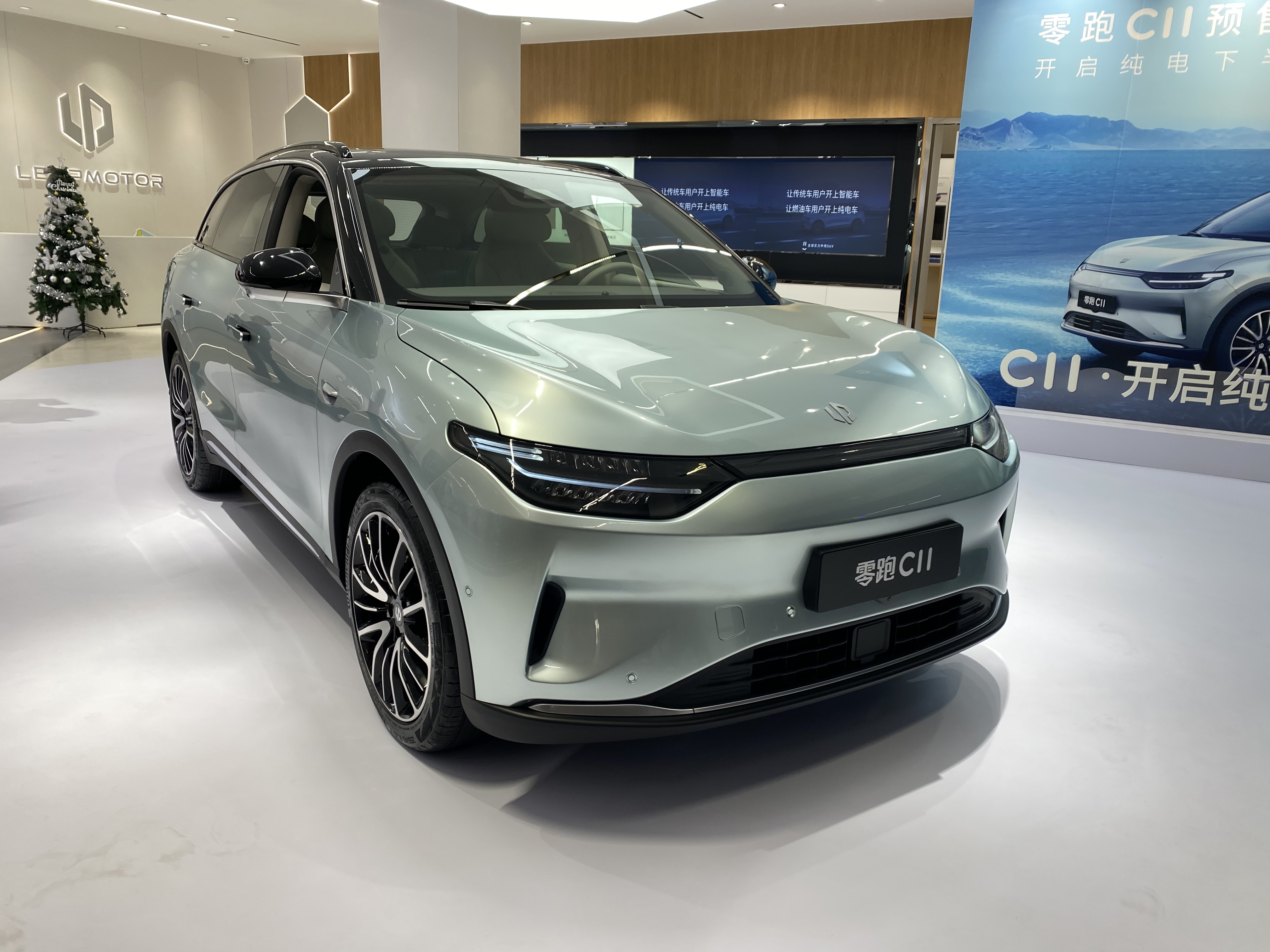
Pre-sales will begin on January 1, 2021. At the same time, LI Automotive is offering a tiered purchase discount: if you place the order in January, you can get a deduction of 20,000 yuan off the purchase price of the vehicle; if you place it in February, you can get a 19,800 yuan discount, and so on, with the deduction amount decreasing by 2,000 yuan per month.
Comment:
Positioned as a mid-size SUV, the LI C11 is the third model released by LI. Although the delivery time will have to wait until the fourth quarter of next year, the price positioning brings significant advantages.
At the same time, the C11 has some eye-catching details, such as the frameless glass on the front row and the hidden electric door handle. In addition, there is LI’s self-developed assisted driving system that uses 28 sensors.
Currently, the C11 that can be experienced is not yet a mass-produced version, and more accurate experience may have to wait for the mass-produced version to be delivered.
This article is a translation by ChatGPT of a Chinese report from 42HOW. If you have any questions about it, please email bd@42how.com.
